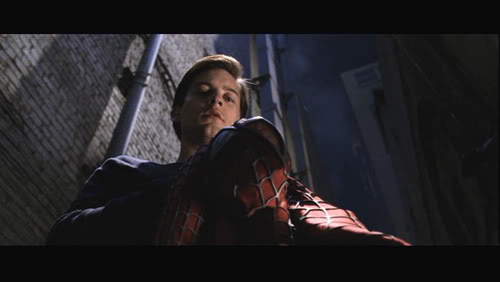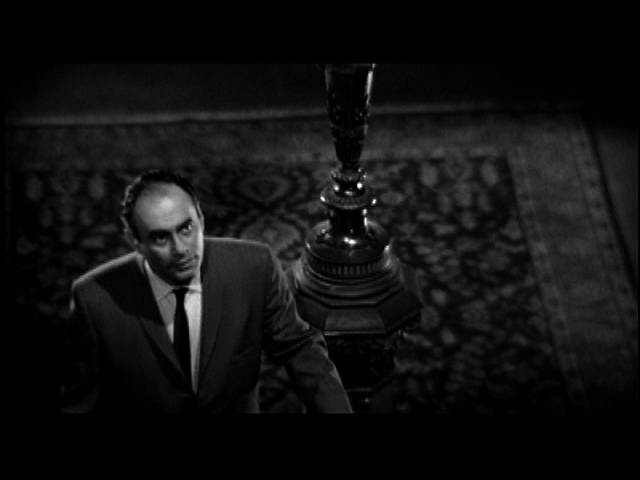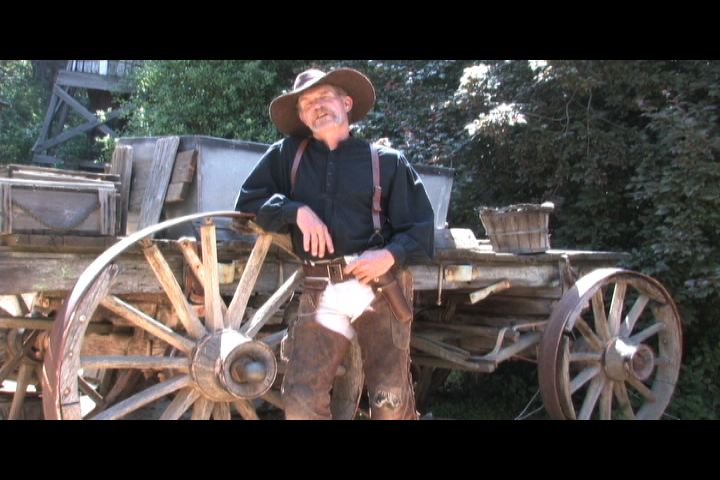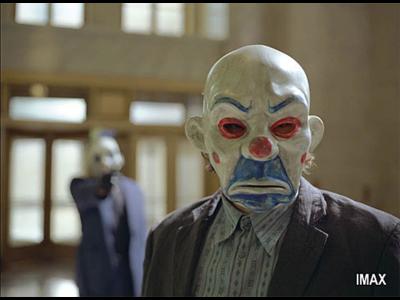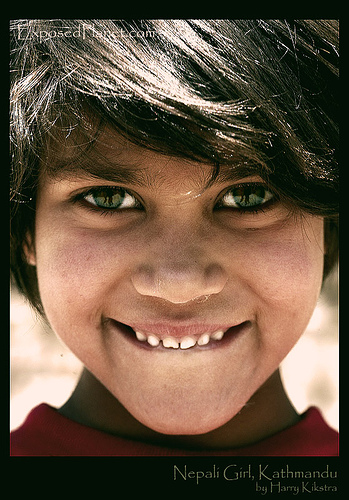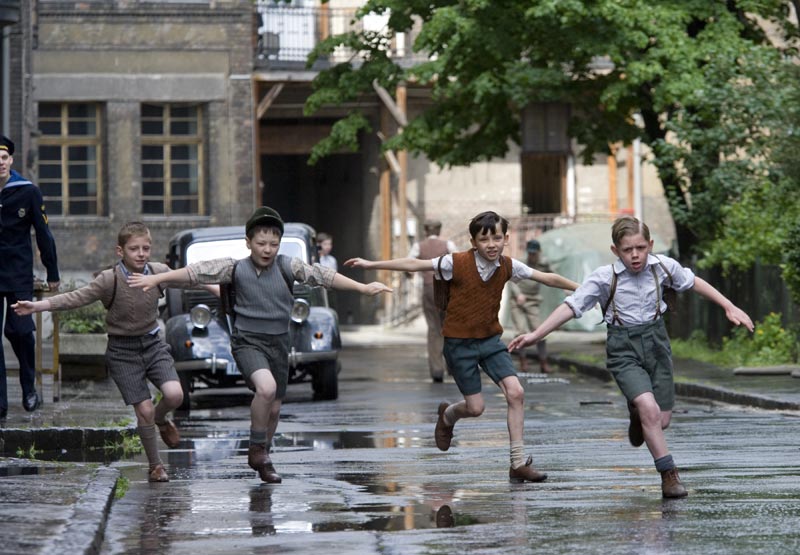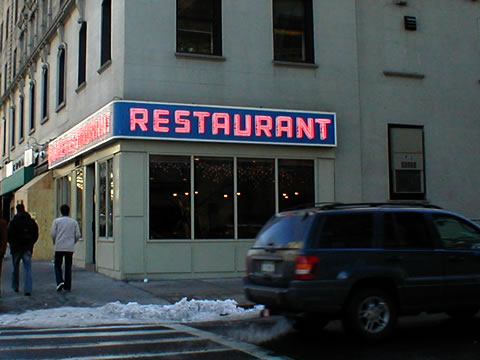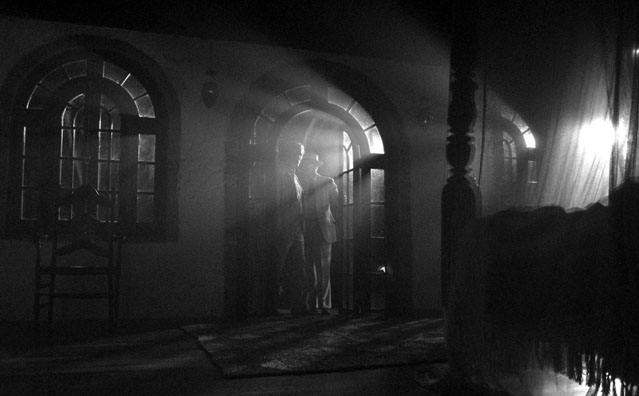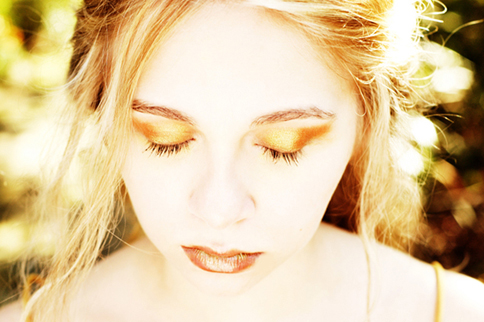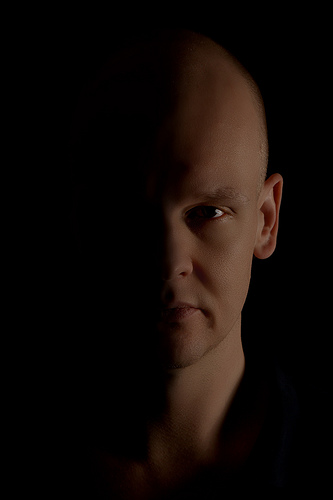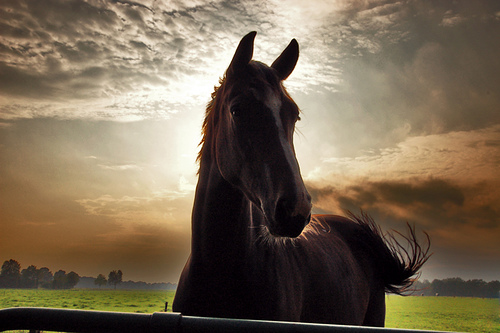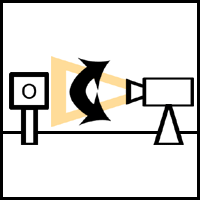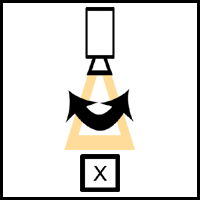Cinematic Technique Terms 2

Cinematic Technique of Film
- 1.
This angle illustrates the new found power that Peter Parker feels from his spider suit.
- A.
High angle
- B.
Low angle
- C.
Eye level angle
- D.
Dutch angle
Correct Answer
B. Low angleExplanation
A low angle is used to portray a character as powerful, dominant, or heroic. In this context, the low angle suggests that Peter Parker feels a newfound power from his spider suit. The camera is positioned below the character, looking up at him, which creates a sense of elevation and importance. This angle choice emphasizes Peter's confidence and strength, highlighting his transformation and the impact of the spider suit on his character.Rate this question:
-
- 2.
This angle shoots the subject from above to create a feeling of powerlessness and/or weakness.
- A.
High angle
- B.
Low angle
- C.
Eye level angle
- D.
Dutch angle
Correct Answer
A. High angleExplanation
A high angle shot is taken from above the subject, creating a perspective that makes the subject appear smaller and less powerful. This angle is commonly used to convey a sense of powerlessness or weakness in the subject.Rate this question:
-
- 3.
This angle is the most natural and accounts for 90-95% of shots seen in films.
- A.
High angle
- B.
Low angle
- C.
Eye level angle
- D.
Dutch angle
Correct Answer
C. Eye level angleExplanation
The eye level angle is the most natural and commonly used angle in films. It represents the perspective of the viewer, as if they were standing at the same height as the characters. This angle is used in approximately 90-95% of shots seen in films, making it the most common choice. It provides a balanced and realistic view of the scene, allowing the audience to easily connect with the characters and their surroundings.Rate this question:
-
- 4.
This shot is the most natural; subjects are shot from the middle up
- A.
Long shot
- B.
Close up
- C.
Establishing shot
- D.
Medium shot
- E.
Shot
Correct Answer
D. Medium shotExplanation
A medium shot is a camera shot that captures the subject from the middle up, making it the most natural-looking shot. It allows the audience to see the subject's facial expressions and body language while still providing some context of the surroundings. A medium shot is often used in dialogue scenes or to emphasize the subject's emotions and reactions.Rate this question:
-
- 5.
The image being shot takes up at least 80 percent of the frame and therefore appears to be very large.
- A.
Long shot
- B.
Close up
- C.
Medium shot
- D.
Sequence
- E.
Shot
Correct Answer
B. Close upExplanation
A close up shot is when the image being shot takes up at least 80 percent of the frame, making the subject appear very large and filling the screen. This shot is often used to emphasize facial expressions or small details, creating a sense of intimacy and intensity.Rate this question:
-
- 6.
A shot taken from some distance; shows the full subject and perhaps the surrounding scene as well, often causing the object on the screen to appear small.
- A.
Long shot
- B.
Close up
- C.
Medium shot
- D.
Sequence
- E.
Shot
Correct Answer
A. Long shotExplanation
A long shot is a type of shot taken from a distance that captures the full subject and potentially the surrounding scene. This shot often makes the object on the screen appear small in comparison.Rate this question:
-
- 7.
Sets the scene or shows the space of a scene; often a long shot
- A.
Medium shot
- B.
Establishing shot
- C.
Close up
- D.
Sequence
- E.
Shot
Correct Answer
B. Establishing shotExplanation
An establishing shot is used to set the scene or show the space of a scene. It is often a long shot that provides the viewer with a sense of location and context before zooming in to closer shots. This shot is essential in providing the audience with a visual understanding of the surroundings and helps to establish the overall atmosphere or mood of the scene.Rate this question:
-
- 8.
A single, uninterrupted piece of film.
- A.
Long shot
- B.
Close up
- C.
Medium shot
- D.
Sequence
- E.
Shot
Correct Answer
E. ShotExplanation
A shot refers to a single, uninterrupted piece of film. It is a fundamental unit of film production and editing, capturing a specific moment or action. It can vary in duration and can be composed of various camera angles, such as a long shot, close-up, or medium shot. A sequence, on the other hand, refers to a series of related shots that together form a coherent narrative. Therefore, the correct answer is shot, as it accurately describes a single piece of film.Rate this question:
-
- 9.
This type of lighting creates suspense or suspicion in a scene.
- A.
High key lighting
- B.
Low key lighting
- C.
Neutral lighting
- D.
Bottom/side lighting
- E.
Front/rear lighting
Correct Answer
B. Low key lightingExplanation
Low key lighting creates suspense or suspicion in a scene by using a limited amount of light, resulting in strong contrasts between light and dark areas. This technique is often used in film noir or thriller genres to create a mysterious or tense atmosphere. The shadows and lack of light can obscure certain details, adding to the sense of intrigue and uncertainty.Rate this question:
-
- 10.
creates bright and open-looking scene; conveys warmth, comfort, happiness.
- A.
High key lighting
- B.
Low key lighting
- C.
Neutral lighting
- D.
Bottom/side lighting
- E.
Front/rear lighting
Correct Answer
A. High key lightingExplanation
High key lighting refers to a lighting technique that involves using a lot of bright, even lighting to create a scene that appears bright and open. It is often used in photography and film to convey a sense of warmth, comfort, and happiness. High key lighting can eliminate shadows and create a soft, diffused light that enhances the overall mood of the scene. This technique is commonly used in genres such as romantic comedies or cheerful advertisements, where the goal is to create a visually pleasing and positive atmosphere.Rate this question:
-
- 11.
direct lighting from below or from one side; often dangerous or evil- looking, may convey split personality, moral ambiguity, or secrecy.
- A.
High key lighting
- B.
Low key lighting
- C.
Neutral lighting
- D.
Bottom/side lighting
- E.
Front rear lighting
Correct Answer
D. Bottom/side lightingExplanation
Bottom/side lighting refers to the placement of light sources below or to the side of the subject. This type of lighting creates strong shadows and emphasizes the contours of the subject, giving it a dramatic and sometimes sinister appearance. It can be used to convey a sense of danger, moral ambiguity, or secrecy, making it suitable for portraying characters with a split personality or evil intentions.Rate this question:
-
- 12.
Direct lighting of an object/person; gives an angelic or innocent impression
- A.
High key lighting
- B.
Low key lighting
- C.
Neutral lighting
- D.
Front/rear lighting
- E.
Bottom/side lighting
Correct Answer
D. Front/rear lightingExplanation
Front/rear lighting refers to the positioning of the light source in relation to the subject. When the light is placed in front or behind the subject, it creates a direct lighting effect. This type of lighting is often used to highlight the features of the object or person, giving them a radiant and innocent appearance. It eliminates shadows and creates a soft, even illumination, which can enhance the angelic or innocent impression of the subject.Rate this question:
-
- 13.
The focal length of the lens changes, making the object appear to move closer or further away. The lens moves focusing on an important object or face.
- A.
Pan
- B.
Tilt
- C.
Zoom
- D.
Tracking/dolly
Correct Answer
C. ZoomExplanation
When the lens zooms, it adjusts its focal length, allowing it to change the magnification of the image. This change in focal length makes the object appear closer or further away, without physically moving the camera. Therefore, zooming is the correct answer in this context. Pan refers to horizontal movement, tilt refers to vertical movement, and tracking/dolly refers to following the subject's movement.Rate this question:
-
- 14.
The camera moves up and down along the vertical axis; often used to emphasize impressiveness of a character or setting.
- A.
Pan
- B.
Tilt
- C.
Zoom
- D.
Tracking/dolly
Correct Answer
B. TiltExplanation
Tilt refers to the camera movement where it moves up and down along the vertical axis. This technique is commonly used in filmmaking to emphasize the impressiveness of a character or setting. By tilting the camera, the filmmaker can create a sense of grandeur or heighten the impact of a particular scene. This technique is particularly effective in capturing the scale of tall buildings, towering landscapes, or the imposing presence of a character.Rate this question:
-
- 15.
The camera itself is moving with the action – on a track, on wheels, or hand held. Often used for “walk & talks”.
- A.
Pan
- B.
Tilt
- C.
Zoom
- D.
Tracking/dolly
Correct Answer
D. Tracking/dollyExplanation
Tracking/dolly is the correct answer because it refers to the technique of moving the camera with the action either on a track, on wheels, or handheld. This technique is commonly used for "walk and talks" where the camera follows the characters as they move. Pan, tilt, and zoom are different camera movements and do not specifically involve physically moving the camera with the action.Rate this question:
-
- 16.
The camera pivots along the horizontal axis, left or right; usually for viewer to take in scenery.
- A.
Pan
- B.
Tilt
- C.
Zoom
- D.
Tracking/dolly
Correct Answer
A. PanExplanation
Pan refers to the horizontal movement of a camera, either to the left or right. It is commonly used to capture wide shots and allow the viewer to take in the scenery. The camera pivots along its horizontal axis, providing a sweeping motion that adds depth and perspective to the shot.Rate this question:
-
- 17.
An image overlaps into another; can create a connection between images.
- A.
Cut
- B.
Fade
- C.
Dissolve
- D.
Eye-line match
Correct Answer
C. DissolveExplanation
The term "dissolve" refers to a transition effect in video editing where one image gradually fades out while another image simultaneously fades in. This effect creates a smooth and seamless connection between the two images, as if they are blending or merging together. In the context of the given statement, using a dissolve transition can help to visually connect two overlapping images by smoothly transitioning from one image to another, without any abrupt cuts or changes.Rate this question:
-
- 18.
Gradual transition where scene fades to black (or another color); often implies that time has passed.
- A.
Cut
- B.
Fade
- C.
Dissolve
- D.
Eye-line match
Correct Answer
B. FadeExplanation
Fade is the correct answer because it refers to a gradual transition where the scene fades to black or another color. This technique is often used in films to imply that time has passed. Unlike a cut, which is a sudden transition between two shots, a fade allows for a smoother and more subtle transition. Dissolve and eye-line match are also techniques used in filmmaking, but they do not specifically refer to a fading transition.Rate this question:
-
- 19.
Abrupt transition of visual content from one shot to another; most common form of editing.
- A.
Cut
- B.
Fade
- C.
Dissolve
- D.
Eye-line match
Correct Answer
A. CutExplanation
Cut is the correct answer because it refers to the abrupt transition of visual content from one shot to another, which is the most common form of editing. A cut is a direct change from one shot to another, creating a seamless transition in the visual content. It is a fundamental technique in film and video editing, allowing for the progression of the narrative and the creation of visual interest. Cuts are often used to maintain the continuity of a scene and keep the audience engaged.Rate this question:
-
- 20.
A shot of a person looking, then a cut to what he or she saw, followed by a cut back for a reaction. The cut back is often a close up shot to show how the character is reacting. Often used to build tension.
- A.
Crosscut
- B.
Flashback
- C.
Shot reverse shot
- D.
Dissolve
Correct Answer
C. Shot reverse shotExplanation
Shot reverse shot is the correct answer because it refers to a sequence of shots that alternate between two characters or two different angles of the same character. In this sequence, the first shot shows a person looking at something, then it cuts to what they saw, and finally cuts back to show the person's reaction. The cut back is often a close-up shot to emphasize the character's emotions and build tension. This technique is commonly used in filmmaking to create a sense of connection between characters and to highlight their reactions to important events or revelations.Rate this question:
-
- 21.
Movement into action that has happened in the past, often signified by a change in music, voice-over narration, or a dissolve
- A.
Crosscut
- B.
Flashback
- C.
Cut
- D.
Eye-line match
Correct Answer
B. FlashbackExplanation
A flashback is a narrative technique used in storytelling where the sequence of events is interrupted to show an earlier event or scene that happened before the current time frame. It is often indicated by a change in music, voice-over narration, or a dissolve effect. This allows the audience to gain insight into a character's past experiences or provide context for the current events in the story.Rate this question:
-
- 22.
Click on the following link and decide what type of sound you are hearing.(Sound logically heard by all characters in a scene)Ice Skating
- A.
Diegetic
- B.
Non-diegetic
- C.
Internal diegetic
Correct Answer
A. DiegeticExplanation
The given correct answer is "diegetic." Diegetic sound refers to any sound that is logically heard by the characters in a scene, such as the sound of ice skating in this case. It is a sound that exists within the narrative world of the film or story and is part of the characters' reality.Rate this question:
-
- 23.
Click on the following link and decide what type of sound you are hearing.(Sound that is heard by the audience, but not by any characters in the film.)JAWS!
- A.
Diegetic sound
- B.
Non-diegetic sound
- C.
Internal diegetic sound
Correct Answer
B. Non-diegetic soundExplanation
The correct answer is non-diegetic sound. In the film JAWS, the sound that is heard by the audience but not by any characters in the film is non-diegetic sound. This type of sound is typically added in post-production and includes elements like background music, voiceovers, and sound effects that enhance the overall viewing experience for the audience. In the case of JAWS, the iconic theme music that plays during suspenseful moments is an example of non-diegetic sound.Rate this question:
-
- 24.
Earth is a film in which James Earl Jones narrates video taken in nature. Voice over narration and thoughts that only one character and the audience can hear are called....
- A.
Diegetic sound
- B.
Non-diegetic sound
Correct Answer
B. Non-diegetic soundExplanation
In the film Earth, James Earl Jones narrates video taken in nature. Voice over narration and thoughts that only one character and the audience can hear are called non-diegetic sound. Non-diegetic sound refers to any sound that is not part of the on-screen world and is typically used to provide commentary, enhance emotions, or convey information to the audience. In this case, James Earl Jones' narration is not heard by the characters in the film but is added for the audience's benefit, making it an example of non-diegetic sound.Rate this question:
-
Quiz Review Timeline +
Our quizzes are rigorously reviewed, monitored and continuously updated by our expert board to maintain accuracy, relevance, and timeliness.
-
Current Version
-
Sep 05, 2023Quiz Edited by
ProProfs Editorial Team -
Feb 11, 2015Quiz Created by
Ssever00
 Back to top
Back to top



